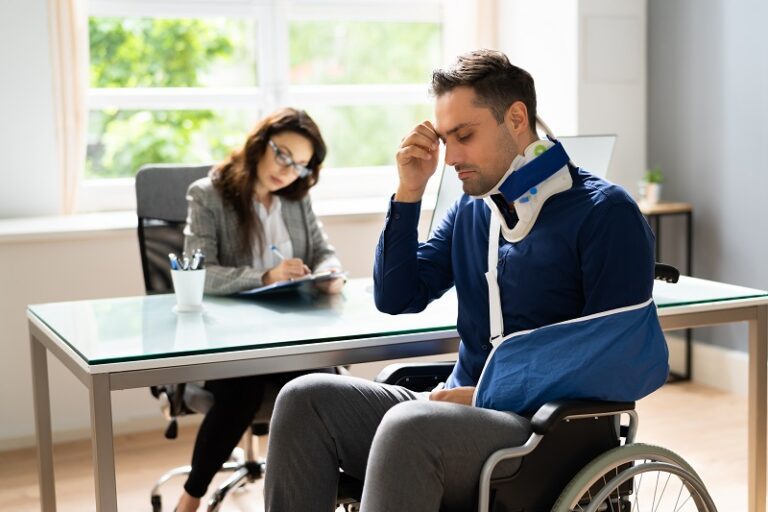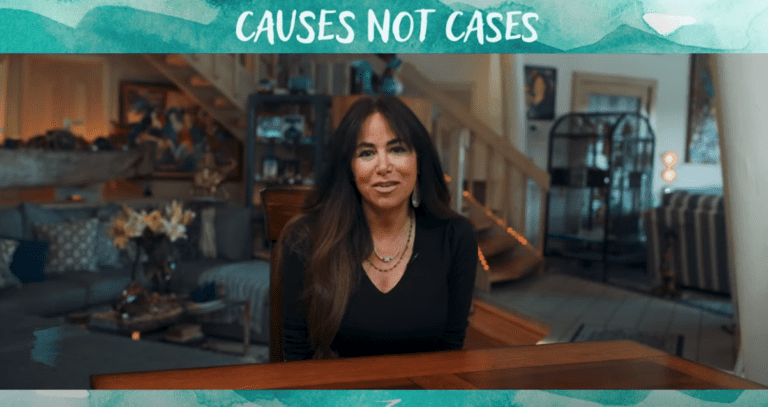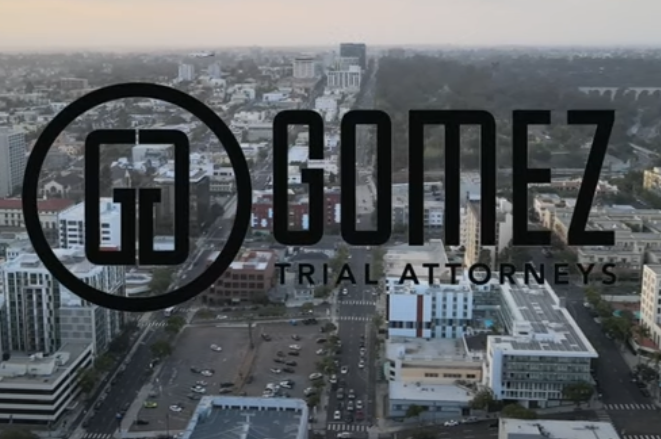
You have probably heard the term countless times, but do you know what “right of way” really means in the context of driving a car, truck, or motorcycle? If you are like many drivers, your answer is something like, “I thought I did, but now I am not so sure,” and that is okay. Many of us went through high school Driver’s Ed. and took the written portion of the driving test years ago. A little refresher wouldn’t hurt.
In this blog post, we will unpack what driving right of way means, how it applies in everyday driving situations, and steps you can take if someone else’s failure to give you the right of way on the road leads to an accident and injuries.
A Working Definition for “Right of Way”
Let’s start by getting back to basics by defining “right of way” for drivers.
State laws commonly define words and phrases in the motor vehicle codes. Unfortunately, those definitions don’t always make much sense to an everyday reader (or even many lawyers). For example, here is how California law defines “right of way” in the state’s Vehicle Code:
“Right-of-way” is the privilege of the immediate use of the highway.
It is the same definition California statutes have used since 1959, and it has not necessarily aged well. If anything, it may prompt more questions than it answers for today’s drivers, like “What does ‘immediate use’ mean?” and “Does that mean ‘right of way’ only applies to driving on a highway?”
Here is what we think (or at least hope) is a more straightforward way to say it: Right of way explains which vehicle has priority over other vehicles to enter or occupy a travel lane.
It provides the answer to a wide variety of driving scenarios, such as:
- Who goes first when two cars cross paths at a four-way intersection?
- When is it safe for a vehicle to turn left across opposing traffic?
- How should motorists react to pedestrians or cyclists in or near the roadway?
- What is the proper moment to merge onto a highway or to change lanes?
We could go on, but you get the idea. Right of way is the solution to any point of traffic conflict.
Basic Right of Way Rules
To stay safe behind the wheel, drivers must learn right of way rules and keep them in mind at all times. Let’s review some of the most important right of way rules that you should know, drawn from California’s right of way statutes and the California Driver Handbook.
At Intersections
Here are the basic right of way rules at intersections:
- A car that already entered an intersection has the right of way over a car arriving at the intersection afterward.
- A car that approaches any intersection controlled by traffic lights or yield signs must follow the instructions given by those signals for who has the right of way.
- In the absence of traffic lights or yield signs, when two cars simultaneously arrive at an intersection other than a T-intersection, the car on the right has the right of way.
- In the absence of traffic lights or yield signs, when two cars arrive at a T-intersection, the car on the road that continues through the intersection (the top of the T) has the right of way over the car on the road that ends at the intersection (the bottom of the T).
- At any intersection where one road has a stop and the other does not (i.e., a two-way stop), a car in the road without the stop has the right of way over a car in the road that has the stop.
When Making a Left or U-Turn
As a general rule, a car making a left or U-turn across an opposing or adjacent lane of traffic must always yield the right of way to any approaching car that poses an immediate hazard—that is, one that would likely not have time to stop if the left or U-turning car pulled in front of it. The car may only make a left or U-turn once it is reasonably safe to do so and no immediate hazards from other vehicles exist.
Once the left or U-turning car has made its move, however, it has the right of way over cars approaching in the lane it crosses. Those cars must slow down or stop to allow the left or U-turning car to complete its turn.
At Driveways, Alleys, and Other Entrances to a Road
In the absence of traffic control devices or signage, a car entering or crossing a road from a driveway, alley, or any other entrance to a road must stop and yield the right of way to any car already on the road. The car entering or crossing can only proceed once it is reasonably safe to do so.
As with left and U-turns, once a car entering a roadway from a driveway or alley pulls into the travel lane, however, it has the right of way and other cars already on the road must slow down or stop to allow the car to proceed.
Around Pedestrians
Pedestrians are the most vulnerable of all road users because they have no protection whatsoever if a motor vehicle strikes them. For that reason, pedestrians always have the right of way over motor vehicles at any marked or unmarked crosswalk. In many states (including California), pedestrians merely approaching a marked or unmarked crosswalk have the right of way over cars and trucks—motor vehicles must slow down or stop to allow those pedestrians to enter and cross the road.
Away from marked or unmarked crosswalks, cars on the road have the right of way over pedestrians. Drivers approaching a pedestrian on or around the road away from a crosswalk must nevertheless exercise caution to avoid a collision, which may require the driver to slow down or stop.
Pedestrians also must exercise caution on or near roads. They should not step out in front of motor vehicles that pose an immediate hazard, and must not unnecessarily impede or delay traffic once they begin crossing a road. Still, a pedestrian’s failure to exercise that care does not excuse the driver of a motor vehicle from exercising the care necessary to avoid a collision with a pedestrian.
Keep in mind, too, that most states define the term pedestrian broadly. It includes not just people on foot, but also rollerbladers, skateboarders, people in wheelchairs, and anyone riding a three-or-four-wheeled mobility device. (People on bicycles, however, are not considered pedestrians, and must generally follow the rules of the road applicable to motor vehicles.)
Around Emergency Vehicles
In all states, the general rule is that emergency vehicles with their lights or sirens activated have the right of way over all other vehicles. All vehicles must pull over or stop to allow an emergency vehicle to pass in that situation.
Cars approaching an emergency vehicle, tow truck, or construction vehicle stopped at the side of any road must pull into an adjacent lane to give the stopped vehicle a wide berth. If it is unsafe to do so, it must slow down to a reasonable speed to ensure the safety of those stopped on the side of the road.
Other, Less-Common Situations
- On a steep one-lane road where two vehicles cannot pass each other going in opposite directions, the vehicle traveling uphill has the right of way. The vehicle traveling downhill must back up until it can pull off and allow the uphill-traveling vehicle to pass.
- Cars already in a roundabout have the right of way over cars entering the roundabout.
- Pedestrians and bicyclists in or entering a roundabout have the right of way over all motor vehicles in or entering the roundabout.
Have questions about the right of way in a driving situation not mentioned above? Contact your local Department of Motor Vehicles for help, or ask an experienced car accident attorney for guidance.
Right of Way Mistakes Lead to Accidents, Injuries, and Losses
It is probably obvious to most drivers why it is so important to learn and follow right-of-way rules. The rules set expectations among all users of the road. It helps people predict what others will do in a driving situation, which in turn allows them to make choices that help ensure their own and others’ safety.
This is why the failure to follow a right of way rule can have tragic, costly consequences for everyone involved. At intersections, in heavy traffic, or anywhere pedestrians approach an active roadway, a slip-up in observing the right of way can easily trigger a collision that injures or kills innocent victims. The driver who makes that mistake will ordinarily face legal liability, which may include an obligation to pay damages to injured victims, and potential criminal liability for violating state law.
Damages for Right of Way Accident Injuries and Losses
Victims of right-of-way accidents can turn to experienced car accident injury lawyers for help obtaining compensation for the harm done to them.
By pursuing lawsuits and insurance claims, a skilled attorney may secure payment for a right of way accident victim’s:
- Medical expenses related to treating injuries, such as the costs of emergency transportation, hospitalization, long-term rehabilitation, medication, and medical equipment.
- Other expenses a victim incurs because of the accident, such as costs of repairing or replacing damaged property, or of hiring services to assist with everyday activities while the victim heals.
- Lost income due to the victim missing work or becoming disabled and unable to work.
- Pain, suffering, loss of quality of life, and harm to personal or intimate relationships owing to the accident and its resulting injuries.
Families of deceased victims of right-of-way accidents may have the right to seek similar types of compensation for their tragic loss through a wrongful death lawsuit.
Liability for Right of Way Accidents
Victims of right-of-way accidents frequently express surprise when they learn about who may owe them the compensation listed above. They assume, not unreasonably, that the driver who made a right of way mistake will have liability to them; and that is frequently correct. But other parties may share that liability or bear it entirely.
For example:
- Employers of drivers who make harmful right-of-way errors may owe damages to victims of their employees’ misconduct while driving a company vehicle, especially if those employers failed to train or supervise employees to ensure safe driving practices.
- Municipal governments and road engineers may face liability for a right of way accident, if their design, construction, or maintenance of a roadway made it unreasonably dangerous and likely to result in right of way accidents. For example, liability could fall on a local road agency that builds an intersection with extremely limited sight lines and fails to take reasonable steps to improve its safety.
- Bars, restaurants, and social hosts that serve alcohol to an underage or visibly intoxicated driver may owe damages to victims of any right-of-way accident that a drunk driver causes.
These are just a few examples. The important takeaway is that individuals injured in right-of-way accidents, and the families of anyone who died in one, may have far more options for securing compensation for their losses than they ever imagined. A skilled lawyer can help identify those parties and help hold them accountable.
Fight Back Against Right of Way Accidents
Everyone who uses the roads has a part to play in preventing right-of-way accidents. The first and most important measure all of us can take is to review the rules above and follow up with their local DMV with any questions. Safety on the road is a responsibility we all share.
Victims of right-of-way accidents also have a role. By pursuing legal action against parties with liability, they keep the pressure on individuals, insurance companies, and local governments to do their part to educate the public and shoulder the financial burden of preventable losses.
If a right-of-way accident harmed you or a loved one, contact an experienced car accident attorney today to learn more about your rights.







